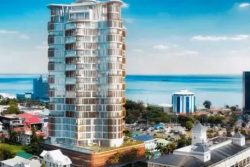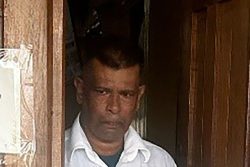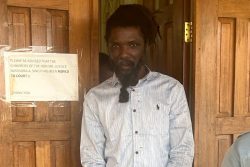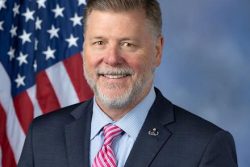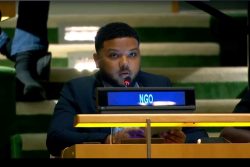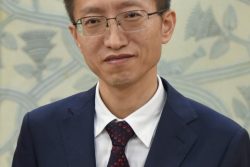Guyana, in April 2013, celebrates its 60th anniversary of cabinet government. The Cabinet is an essential element in the state. It makes decisions and promulgates policies on behalf of the entire executive branch of government. The cabinet system in a democratic state should be founded on at least two fundamental principles. First, ministers are accountable to Parliament and, second, they are responsible, ‘collectively’ to the Cabinet itself and to the President who appoints them.
The Constitution of the Cooperative Republic of Guyana (with amendments to 12th August 2003) provides (in Article 106) for a Cabinet “which shall consist of the President, the Prime Minister, the Vice-Presidents and such other ministers as may be appointed to it by the President.” It prescribes, also, that “The Cabinet shall aid and advise the President in the general direction and control of the Government of Guyana and shall be collectively responsible therefor to Parliament.”
The present system evolved from the implantation of democratic government in British Guiana in the form of the British Guiana (Constitution) Order-in-Council 1953. General elections, in which the original People’s Progressive Party won a majority of seats,were held on 27thApril 1953 under a universal adult franchise. Electors voted for a bi-cameral legislature consisting of a State Council and a House of Assembly.
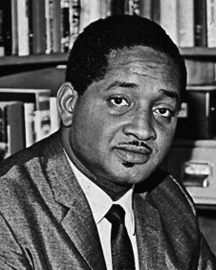
A proto-cabinet called the Executive Council was appointed from three ex-officio officials, six elected members of the House of Assembly and one nominated member of the State Council. The elected members in turn elected a ‘Leader of the House’ from among their number. The Executive Council – popularly called ‘Exco’ – was Guyana’s first ‘cabinet.’ It consisted of the Governor as President, three ex-officio members – the Chief Secretary, Financial Secretary and Attorney General and six elected members. The Governor had a ‘casting,’ but not an ‘original,’ vote.
Dr C B Jagan was elected ‘Leader of the House of Assembly’ and was appointed Minister of Agriculture, Lands and Mines. LFS Burnham was appointed Minister of Education; A Chase, Minister of Labour, Industry and Commerce; S E King, Minister of Communications and Works; Dr J P Lachmansingh, Minister of Health and Housing and J N Singh, Minister of Local Government and Social Welfare
The British Government subsequently proclaimed a state of emergency, suspended the Constitution, landed British Army troops and revoked the appointments of the members of the Council in October 1953 on the pretext of a ‘constitutional crisis’ having erupted. This brought the life of the Executive Council, State Council and House of Assembly to an abrupt close after only about five months.
The British Government then issued the British Guiana (Constitution) (Temporary Provisions) Order-in-Council 1953 on December 22, 1953. Seven days later, it installed an ‘interim’ Executive Council presided over by the Governor. It included three ex-officio officials –Chief Secretary (with responsibility for External Affairs, Defence, Security Immigration, Civil Service etc.); Financial Secretary (Finance and Economic matters) and Attorney General (Legal Matters). Six ‘members’ were appointed with responsibility, respectively, for Agriculture, Lands and Mines; Labour, Health and Housing; Communi-cations and Works and Local Government, Social Welfare and Co-operative Develop-ment. On other member was appointed ‘without portfolio.’
British Guiana, after the interlude during which an unelected ‘interim’ administration was imposed on the country, resumed its constitutional development. The British Guiana (Constitution) Order-in-Council 1953 was then amended by the British Guiana (Constitution) (Temporary Provisions) Order-in-Council 1956. Elections held under these instruments on 12thAugust 1957 produced a new, partly-elected Legislative Council in which the PPP held 9 seats, People’s National Congress, 2; United Democratic Party, 1; National Labour Front, 1 and Guianese Independence Movement, 1.
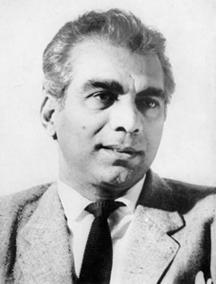
The Executive Council in 1957 was presided over by the Governor and consisted of three ex-officio members – the Chief Secretary (External Affairs, Defence, Security Immigration, Civil Service etc.), Financial Secretary (Finance and Economic matters), Attorney General (Legal Matters) – and five elected members of the majority party – Dr C B Jagan (Minister of Trade and Industry); B H Benn (Minister of Commu-nity Development and Education); E B Beharry (Minister of Natural Resources); J Jagan (Minister of Labour, Health and Housing) and Ram Karran (Minister of Communication and Works). Beharry’s appointement was revoked and, as a result, BS Raiwas appointed Minister of Community Development and Education and BH Benn, Minister of Natural Resources.
Constitutional progress continued. The new British Guiana (Constitution) Order in Council 1961 came into effect on July 18, 1961 and General elections were held on August 21, 1961. The new Constitution provided for a bi-cameral legislature comprising a 35-memer ‘elected’ Legislative Assembly, a 13-member ‘nominated’ Senate and a 10-member ‘Council of Ministers’ presided over by the ‘Premier.’ The Council of Ministers was responsible to the Legislative Assembly.
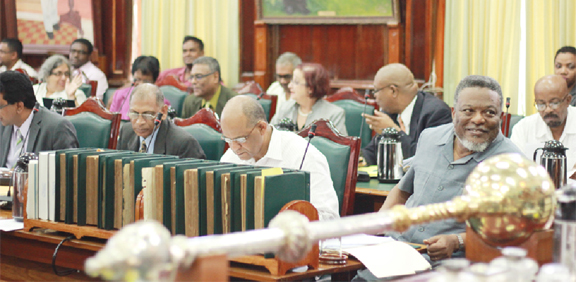
Ministers were apportioned responsibility, respectively for Natural Resources; Works and Hydraulics; Home Affairs; Labour, Health and Housing; Trade and Industry; Finance; Education and Social Development; Communications. The Attorney General was included in the Council.
The years 1961-1964 were a period known as ‘the disturbances’ as a result of serious economic, political, racial instability and conflict among trade unions. A Constitutional Conference was held in London in October 1962 but the three major political parties – PPP, PNC and UF – failed to agree on certain electoral matters. The conference was adjourned and resumed on d October 22, 1963 when the three parties agreed to a British government offer to break the gridlock by imposing a solution. This created a political firestorm but led, also, to a constitutional sea change.
The British Guiana (Constitution) Order 1964 substantially amended the 1961 Constitution by providing for a uni-cameral ‘House of Assembly’ with 53 members elected by a system of proportional representation. Fresh elections were held on December 7, 1964 in which the PPP failed to gain a majority and, the PNC and UF parties agreeing to establish a coalition, formed the new administration. The British Guiana (Constitution) (No. 3) Order, 1964 issued on December 22, removed previous limitations on the size of the Council of Ministers allowing the new Premier, LFS Burnham, to appoint more than nine ministers. This enlargement allowed the Council to include four UF members and the Attorney General.
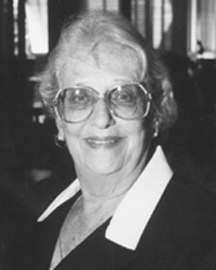
The Premier was re-designated Prime Minister and the Council, apart from his own Premier’s Office and Ministry of Development and Planning, included the ministeries of Agriculture; Communications; Education, Youth Work, Race Relations and Social Development; External Affairs; Finance; Health and Housing; Home Affairs; Labour and Social Security; Lands, Forests and Mines; Local Government and Works and Hydraulics.
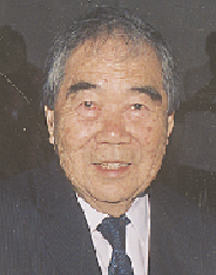
The Guyana Independence Act, 1966, passed on May 12, 1966, established a ‘Cabinet’ among other changes. It allowed non-members of the National Assembly to be appointed ministers provided that they were qualified to be elected as members. They became ex-officio members without the right to vote. The number of portfolios grew to include Economic Development, Information and Trade. Other changes were made from time to time as the years went by Guyana became a republic in accordance with Article 73 (5) of the Constitution and, among other changes, Mr Arthur Chung becoming the first President in place of the Governor General.
The Constitution (Amendment) Act 1978 provided for the National Assembly to resolve itself into a Constituent Assembly for the purpose of drafting a new Constitu-tion. This was done and a new Constitution of the Cooperative Republic of Guyana (1980) was promulgated. The Constitution provided for the election of an executive President as “Head of State, the supreme executive authority and Commander-in-Chief of the armed forces of the Republic.” LFS Burnham was elected President.
The Constitution provided also (in Article 106) for a Cabinet, the provisions of which remained essentially unaltered over the past 33 years.There was, however, a significant change in the composition of the administration as several Vice-Presidents, deputy Prime Ministers and Regional Ministers were appointed. Regional Ministers did not attend Cabinet meetings.
President HD Hoyte, who succeeded LFS Burnham in 1985 and was elected the same year, introduced a Public Service Reform Programme with the help of the UK Overseas Development Administration. The Public Service Review Report (1990) recommended the reduction of the number of Ministries from 18 to 11.
This was the size of the Cabinet when the PPP returned to office in the wake of the October 1992 general elections. The Cabinet under Dr CB Jagan then increased to 17 and eventually, under President DR Ramotar grew to 21. Cabinets since 1992, typically, have been an average of about twenty members.

